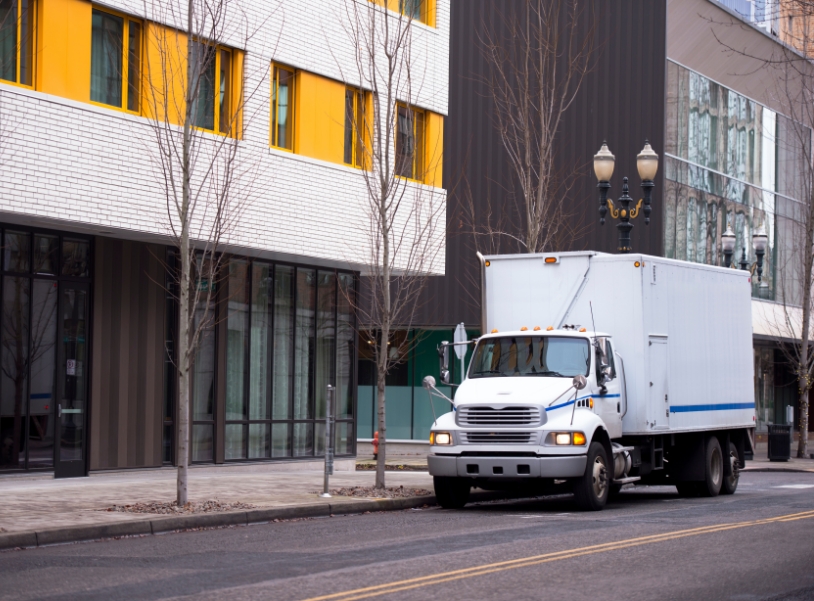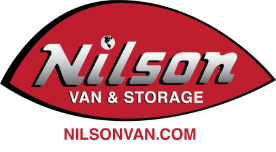Commercial Moving Guide

Preparing Your Business for the Next Step
When relocating your office, you want there to be as little interruption to your business as possible. Making sure your employees have an organized process to prepare for the move is key to making this happen.
Whether you choose to do the packing or hire a moving company, the details below will give you an idea of what to expect. Still overwhelmed? Nilson Van & Storage has plenty of commercial moving solutions to help your business pack up and settle into your new office.
Plan Your Time
Having a specific plan and team in place is crucial to a commercial move. Not only do you have to physically pack, but you will need to coordinate with a large group of employees – possibly even with several different departments.
When it comes to moving a business, being prepared ahead of time will help prevent wasted time and money. Use the timeline below as a guide to planning your company’s move.
Three Months Out
Choose an employee to be the move coordinator. This person will oversee the entire move and assemble a team of employees to assist, if needed. Choose a move-in date, establish your formal relocation policy, and begin tracking moving expenses.
Two Months Out
Notify your current landlord of your impending move, if not required sooner. Obtain insurance for your new location and arrange for all systems to be installed, including phone and internet.
You should also be motivating your employees to get them excited for the extra work that may be required for the move. Write a press release to notify the community and maybe even plan a celebration.
One Month Out
Have employees begin clearing their personal items and packing their spaces. Contact your utility companies to disconnect at your current location and connect at your new office.
Announce your new location to the following:
- Current and prospective customers
- Vendors and contractors
- Banks and insurance providers
- Accounting , payroll, and legal advisers (if external)
- Advertisers
- All tax bureaus
- Appropriate tax assessors
One Week Out Clear out storage lockers and make sure all items are packed and labeled correctly. Take inventory of everything to be moved and mark those items that will not be moved. Back up computer systems, close safety deposit boxes, and forward all incoming mail and/or orders as necessary. Be sure to confirm the final details of your move with the company you’ve hired.
Move-Out Day Assemble your employees before the movers arrive to brief them on what the day will entail. The move coordinator should designate who will help the movers at the current location and at the new location. Perform a final inspection to make sure everything is moved that should be.
Move-In Day A representative or team from your company should be at the new office location to assist the movers. As the items are unpacked, take inventory and note their condition. Contact the moving company with any damage claims and be sure to collect all receipts for moving expenses.
Preparing for Your Relocation
Because everyone in a company is affected by a commercial move, everyone should play a role in relocating, even if it is a small one. Each employee should perform a personal purge of all items they will not need at the new location. They can then pack the items they are personally responsible for ahead of time.
It is important to make this purge on a company scale as well. Records with predetermined storage timelines should be placed in permanent storage long before the move takes place. This will help cut down on the time and cost of the move.
If your employees will be doing most of the packing, it is important to label everything. A plan describing where everything will go in the new location should also be provided. This will help the moving company get your company’s items in the correct place on move-in day and save you time rearranging things after they are gone.
Special Packing Considerations
Businesses contain much bulkier items than most people are used to moving residentially. Many of these items require special consideration during a move. Below are a few things to keep in mind when packing your office for a commercial move.
Desks
Desks cannot be moved with any items in or on them. Seal any loose items, such as pens and paper clips, in envelopes or bags. Loose papers, organizers, and books kept on top of desks must also be packed in boxes.
Upright Filing Cabinets
These cabinets can be moved with contents in place. Simply secure the contents using the draws included and lock or tape the drawers shut.
Lateral Filing Cabinets
Lateral filing cabinets will need to be emptied before moving. Pack all contents in containers and label them appropriately.
Bookcases
These will need to be emptied and partially disassembled. Pack books in containers, remove the shelves, and keep the shelving hardware in a sealed bag or envelope.
Pictures and Bulletin Boards
Remove these items from the wall. Small pictures should be packed together in a container, using packing paper to protect them and fill any gaps.
Small Office Machines
Small machines, such as postage calculators and desk-top scanners, should not be packed. Make sure the cords are disconnected, labeled, and packed in a sealed bag or carton. Leave these items for the movers to place.
Large Office Machines
Large business machines, such as copiers and computers, may need to be serviced and moved by specifically trained personal. Be sure to contact your vendors to find out the appropriate measures for moving these machines.






